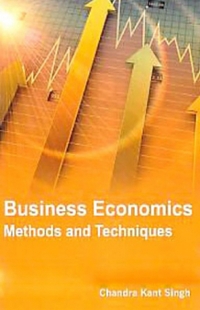Question
Respond to: The Pros to be discussed are (Pierce. 2016): lower tariff and nontariff barriers on U.S. goods through the eventual elimination of all tariffs
Respond to:
The Pros to be discussed are (Pierce. 2016):
- lower tariff and nontariff barriers on U.S. goods through the eventual elimination of all tariffs on industrial products and most tariffs and quotas on agricultural products
- enforceable provisions designed to provide minimum standards of labor and environmental protection in TPP countries
- additional intellectual property rights protection in patent, copyrights, trademarks, and trade secrets
By creating a new channel for bilateral trade and regional trade, countries may evaluate their existing trade agreements in an effort to create a mutually beneficial working relationship. It is also possible that countries may create market-oriented reform agendas for their economies, creating an opportunity to increase trade with the U.S. and other countries (Pierce. 2016)
Acceptance of the TPP would impose enforceable obligations on partner countries to protect workers. Some of these obligations include the freedom to unionize and bargain collectively, laws on unacceptable work conditions, and the elimination of exploitive child labor and forced labor (TPP Protecting Workers Fact Sheet, n.d.).
As globalization increases, combined with concerns over the leaked intellectual properties (IP)chapter of the Trans-Pacific Partnership (TPP) agreement, concerns over the protection of intellectual properties have grown (Gleeson et al., 2017). The IP policy was intended to increase economic growth through an increase in innovation, with a specific focus on creating a monopoly for innovators in the hopes of inducing profits that will further drive innovation (Rogowsky. 2016).
The Cons to be discussed are:
- loss of competition can reduce the quality of products (Cimino-Isaacs & Schott, 2016)
- possible limitations on the government's ability to regulate in areas such as health, food safety, and the environment (Pierce. 2016)
- possible job loss (Pierce. 2016)
- intellectual property protection and medicine (Gleeson et al. 2017)
Competition in an industry creates stress on individuals and organizations. As other products and processes are created, efficiency increases can be seen, generally leading to a higher profit for those who take advantage of the changes. Consumers will make their purchase decisions based on value for the cost, whether this is the quantity or quality of the goods or services. Limiting the competition can create stagnation in the industry or degradation in the quality of products produced (Cimino-Isaacs, C. & Schott. 2016).
With an increase in the availability of new items on the market from other countries, the consumer is at risk of purchasing products that have not been evaluated for the claims they offer or that are made with materials/ingredients that have not been adequately evaluated.
As the trade policy is incorporated, certain industries may see higher benefits than others as their goods are purchased in greater numbers. To meet the higher demand, companies may seek to increase efficiency, relocate, and/or reallocate resources, leading to a loss of jobs in the support industries for the product (Pierce. 2016).
While we only needed to post three cons, as I read more into the IP section, I felt that it warranted being placed in both portions. While this section was meant to improve innovation further, it had secondary effects in the medical field through increased costs due to longer patent terms and extensions, easier patent infringement lawsuits that would limit the introduction of cheaper generic versions of drugs, and the ability to place secondary patents on new uses, new methods, or new processes to use an existing drug (Gleeson et al. 2017).
Trade Theories
The trade theory that I chose to evaluate against the TPP was mercantilism, whose main tenet was that it was in the "...country's best interests to maintain a trade surplus, to export more than it imported..." (Hill & Hult, 2022). By putting this theory into practice, a country would increase its financial standing and, thereby, its prestige and power. Mercantilism encouraged governments to provide intervention, such as tariffs, quotas, and subsidies, to achieve a surplus in the trade balance (Hill & Hult, 2022). The TPP aims to reduce or eliminate tariffs on many trade goods for member countries through government policies and increase the national wealth by increasing the amount of product that is exported from each country. The TPP differs from mercantilism's basis because the policies are spread to benefit all member countries, with many import tariffs being included in those being reduced or eliminated, allowing U.S.-made products to reach foreign markets. While it creates the possibility for the U.S (or the exporting country) to export more items, it is a double edged sword, where a country is likely to be importing more than it exports (TPP Overall US Benefits Fact Sheet, n.d.).
Recommendation
My recommendation would be for the U.S. to sign the Trans-Pacific Partnership agreement after a few additions or changes. By agreeing to the TPP, the U.S. stands to benefit from an increase in exported goods, especially those with lowered tariffs. The reduced tariffs can open up new markets for many products, especially those in the agricultural and automotive industries. I would recommend creating separate classifications on intellectual properties so that humanitarian goods, such as medication, were not held to the same restrictions as items such as artwork or proprietary production methods. The intent of this change would be to allow cheaper and more accessible medical care, especially in developing countries.
Step by Step Solution
There are 3 Steps involved in it
Step: 1

Get Instant Access to Expert-Tailored Solutions
See step-by-step solutions with expert insights and AI powered tools for academic success
Step: 2

Step: 3

Ace Your Homework with AI
Get the answers you need in no time with our AI-driven, step-by-step assistance
Get Started


